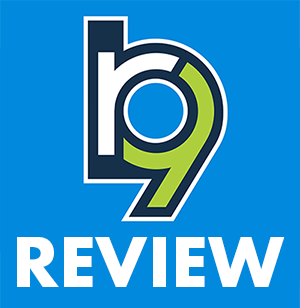When is a location a Location?
 During the pandemic many agencies relied on Zoom for capturing depositions and other jobs. RB9 adjusted by adding Zoom as a job location option. As businesses reopened, on-location jobs have returned and RB adjusted again to offer hybrid Zoom/in-person meetings. With all the changes in the past few years you might find you are entering new locations, so we thought it was a good time to review best practices for adding locations to RB.
During the pandemic many agencies relied on Zoom for capturing depositions and other jobs. RB9 adjusted by adding Zoom as a job location option. As businesses reopened, on-location jobs have returned and RB adjusted again to offer hybrid Zoom/in-person meetings. With all the changes in the past few years you might find you are entering new locations, so we thought it was a good time to review best practices for adding locations to RB.
When scheduling a job you have several Location Type options for the in-person location. With a new location how do you decide which option to choose?
Enter locations when scheduling jobs
The first option, Manual, should be used only when you are absolutely sure you won’t use that location again. Since it is almost as quick to save a location in RB as to use it once, we recommend saving most new locations for reuse so if one ever comes up again you can save yourself having to retype the location information.
However not all job locations should be added to the Locations database. Job locations can be stored in 4 different RB Entity databases: Locations, Firms, Resources, and Business Units. Depending on which database you store a location in you have different options of information you can include and which other RB functions you can use with the location. Choosing the correct database will help you get the most out of RB and increase your efficiency.
Once you decide which database to use, adding a location when scheduling a job is easy. You can check to see if the location is already in RB. If it’s not you can add it right there without leaving the New Job screen.
When is a location a Firm?
If a job takes place at a location that is paying you for the service, select Firm* as the job’s Location Type.
Adding a location as a firm means you can:
- Add contacts at the firm into your RB Contacts database, including all the information you have about each contact.
- Enter detailed information about the location in targeted fields that cover their preferences, your categorizations of them, and any notes about the location.
- Tie the location to cases.
- Bill the location with job information automatically included.
- Communicate with the location about the job, invoices, etc, using RB’s automatic email capabilities.
- Track their payments and your collection efforts.
- Include them in income reports you generate in RB such as Aged A/R and Gross Profit.
- Market additional services to them and keep in touch using RB functions like Anniversary Inquiry and Tag Manager.
*If the job location is at the firm scheduling the job select Same as Ordering Firm so you don’t have to search for the firm a second time under Job Location.
Also
If the location is not engaging you for the job but could potentially schedule work with your agency, add them to the Firm database too. Include the tag(s) you use for potential clients so you can introduce yourself and easily market your services to them from within RB. And if they later order a transcript or other services you have a head start on fulfillment and invoicing.
When is a location a Resource?
If a location is under your control, select Resource* as the job’s Location Type.
The most typical Resource location is a conference room at your office. The reason to save your conference rooms or other locations you control as resources is to avoid double-booking your spaces.
RB tracks resources’ schedules so if the space is already booked when you assign a conference room task to the job the room will not appear in the list of available resources. (If you want to double-book the room you can override RB when assigning resources.)
*Is it a Resource or a Business Unit?
BU (Business Unit) is another Location Type option that contains potential job locations under your control but should be used for parts of your business that you want to use and track separately for revenue purposes. Business units are subdivisions of your business like branch offices or other companies you own. Unlike the other entities you cannot add new BUs when entering a job but that is because these entities are part of your business structure, not something your calendaring department would set up on the fly.
Everything else is a Location, right?
Pretty much.
Once you have eliminated all of the other possible Location Types, any location you will pay to use or that is otherwise not under your control belongs in the generic Location database. For example if you are recording a deposition at a hospital or doctor’s office for your client select Location as the Location Type. Like Firms and Resources you can check to see if it’s already in your Location database and add it if it is not.
Listed under Best Practices, RB Lite, RB9 Tagged RB Lite, RB9
